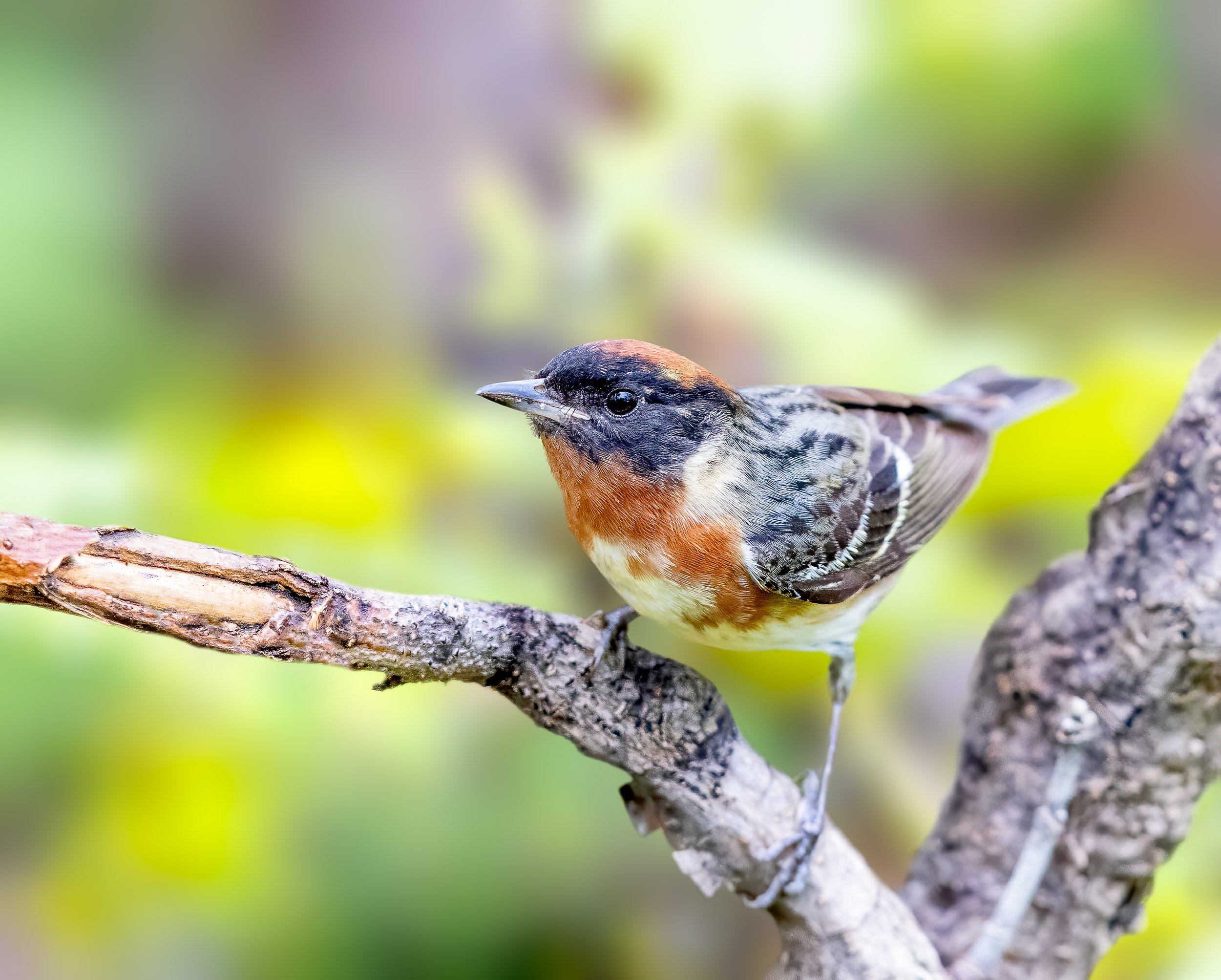Geographic variation in stopover duration for migratory birds
A Bay-breasted Warbler’s week-long stopover in a mixed forest patch highlights the impact of variable weather on songbird migration.
Image by Rajh / Adobe Stock (Education License)
While birding today in a 100-hectare mixed forest patch with a robust understory — a familiar location I frequent each spring — I noticed something interesting. Last weekend, I spotted a Bay-breasted Warbler here, and since then, I’ve consistently heard one singing in the same area, including this morning. This is unusual, as I typically encounter only one Bay-breasted Warbler in this patch each spring, sometimes none at all. This observation leads me to believe it might be the same individual that’s been here for a week.
For a Bay-breasted Warbler, spending a week at a stopover site with 200–500 miles left in its journey is quite striking! I suspect it’s staying so long due to the timing of its arrival and subsequent weather conditions. It arrived after a favorable migration night, followed by another good migration night. However, since then, migration has slowed down to nearly a complete stop, as indicated by my birding lists and radar data from BirdCast. It seems the Bay-breast hadn’t refueled enough by the next migration night, causing it to miss its chance and resulting in a prolonged stopover.
Average number of birds in flight each night in Middlesex county, Massachusetts, according to BirdCast based on radar analysis. The Bay-breasted Warbler’s arrival coincides with the most recent peak. Another peak has not occurred since its arrival.
This observation got me thinking about the spatial variability of weather across the US and its implications for bird migration. BirdCast (Van Doren & Horton 2018) provides long-term averages for bird migration volume across the US, and the Wilcove lab at Princeton has identified stopover hotspots across the eastern US. Using radar workflows from the Cornell Lab of Ornithology and other radar ornithologists, it should be possible to calculate the average number of days between “good” migration nights for each area.
From Rosenberg et al. (2019), fig S6: Cumulated nocturnal migration traffic in spring averaged over 11 seasons (2007–2017). Darker colors indicate more migratory biomass passage.
By combining these components, we could identify critical stopover sites: areas with high migratory volume on average, high variability in weather conditions (causing longer stopovers), and sufficient habitat to support large numbers of birds. These would be crucial areas to conserve if we want to support migratory songbirds.
From Guo et al. (2023), fig. 3: Fig. 3. Fine-scale cumulative stopover density (square centimeters per hectare) of landbirds during autumn migration averaged across 2015 to 2019 for each radar pixel. Zoom-in panel for the KPAH radar near Paducah, Kentucky, highlights large areas around the confluence of the Ohio and Mississippi rivers that harbor high densities of migrants.
Conversely, identifying regions with high migratory volume and long stopovers but poor habitat could highlight ecological traps that need restoration to improve migratory outcomes.
These insights could offer a new perspective on tackling the complexities of songbird migration. By breaking down migration into manageable components, we can better understand and potentially address the challenges these birds face.
References
Guo, F., Buler, J. J., Smolinsky, J. A., & Wilcove, D. S. (2023). Autumn stopover hotspots and multiscale habitat associations of migratory landbirds in the eastern United States. Proceedings of the National Academy of Sciences, 120(3), e2203511120.
Rosenberg, K. V., Dokter, A. M., Blancher, P. J., Sauer, J. R., Smith, A. C., Smith, P. A., … & Marra, P. P. (2019). Decline of the North American avifauna. Science, 366(6461), 120–124.
Van Doren, B. M., & Horton, K. G. (2018). A continental system for forecasting bird migration. Science, 361(6407), 1115–1118.



